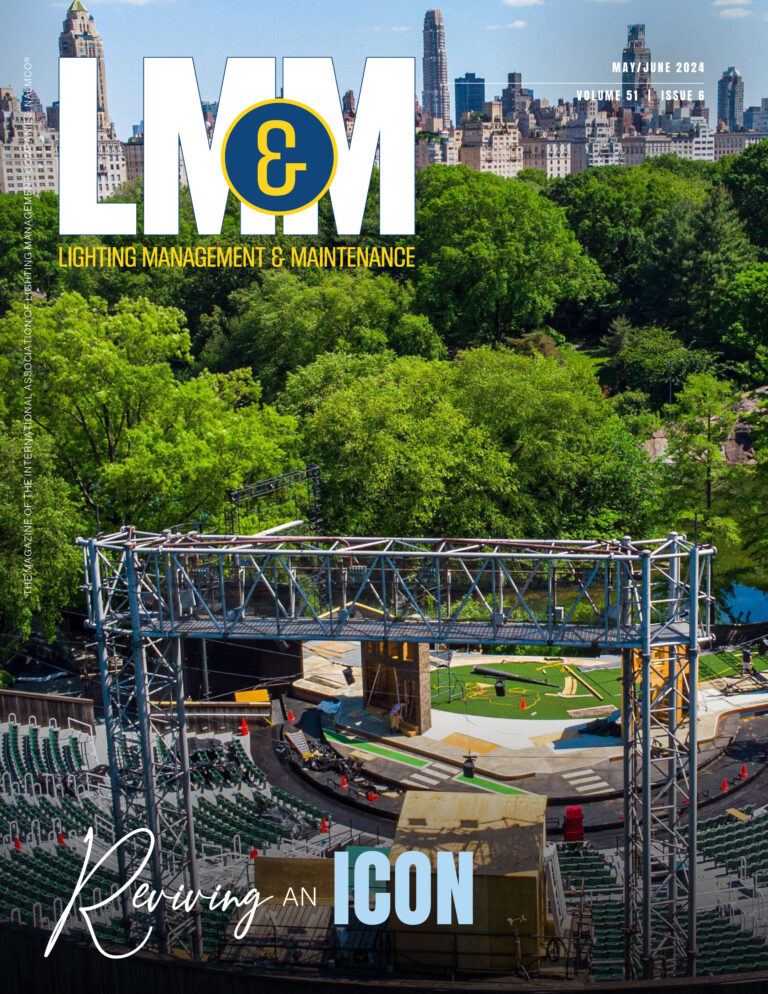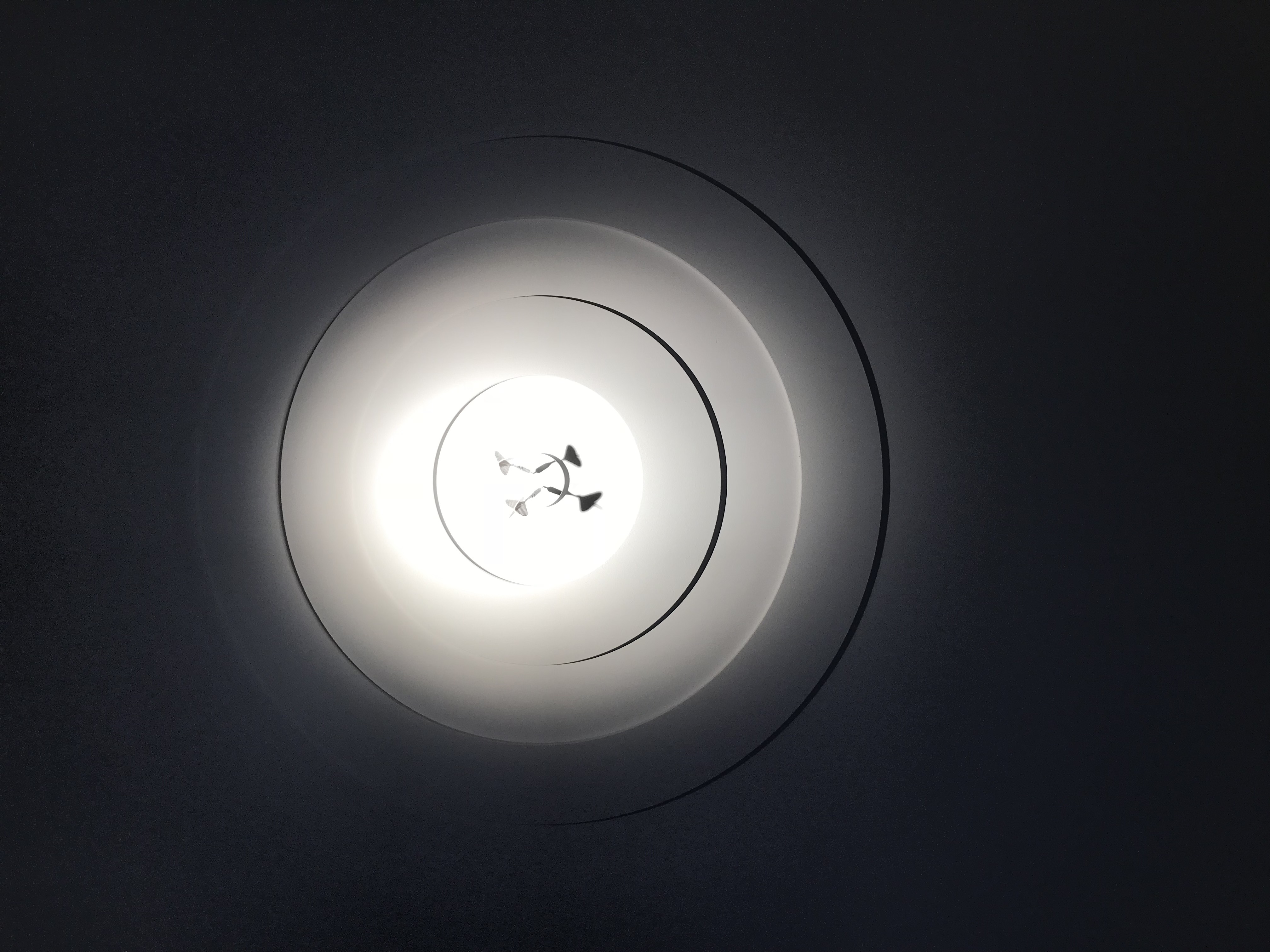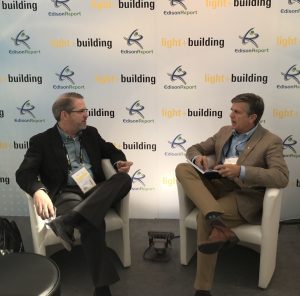 Marshall Miles, CEO of Inventronics, stopped by our studio for a quick discussion. Marshall is rare in that he is an American CEO of a major publicly traded Asian company. I tried to pin Marshall down about how Bluetooth Mesh would save the planet, but he pushed back saying “We like all of the IoT technologies and do not want to bet on only one.” He explained that Inventronics manufactures controls-ready drivers with an auxiliary that can work with almost any technology, and the auxiliary is always on so external power packs are not needed.
Marshall Miles, CEO of Inventronics, stopped by our studio for a quick discussion. Marshall is rare in that he is an American CEO of a major publicly traded Asian company. I tried to pin Marshall down about how Bluetooth Mesh would save the planet, but he pushed back saying “We like all of the IoT technologies and do not want to bet on only one.” He explained that Inventronics manufactures controls-ready drivers with an auxiliary that can work with almost any technology, and the auxiliary is always on so external power packs are not needed.
Another benefit of the auxiliary cable is that it allows the luminaire manufacturer more flexibility in locating the antenna. A third benefit to going the aux route is that it allows for significantly fewer skus, which results in lower inventory and certification costs. In addition, the auxiliary is 12v, meaning it does not matter what the line voltage is used.
Marshall rattled off a few of the key technologies where Inventronics is compatible: Bluetooth Mesh, NB-IoT, DALI, GPRS, ZigBee, Enocean and DMX.
We stopped by the OLEDworks booth where we saw a demonstration their Brite 3 OLED. This is a 120mm x 120mm 300-lumen package. Most packages that size are less than 100 lumens. OLEDworks does not compete with their cusomters and we saw beautiful fixtures in the booth from Philips, Visa, Peerless, Winona and Kichler
Specialty Lighting, Targetti, SLD Laser, Sylvania, Wila, XAL, TCI, Eulum displayed versions of LensVector, the company that offers dynamic beam shaping with no moving parts, technically it is called solid state molecular beam shaping. Think of your iris adjusting in your eye. Specialty demonstrated a luminaire and changed the beam angle from 60° to 10° simply with a phone app. They also demonstrated color tuning and dimming with the same fixture.
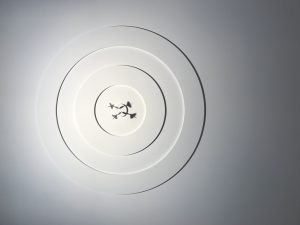
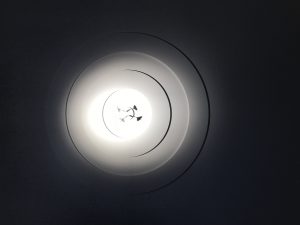 Targetti had scenes preinstalled on several of their LensVector-equipped luminaires. The most impressive was a bright white dartboard where the luminaire switched from a wide flood to a narrow spot—again with no moving parts.
Targetti had scenes preinstalled on several of their LensVector-equipped luminaires. The most impressive was a bright white dartboard where the luminaire switched from a wide flood to a narrow spot—again with no moving parts.
All we were told was to see the drone at Strihl, but we really did not know what to expect. When we arrived to the booth, we saw a rather ugly looking drone—not nearly as  pretty as the drones at CES. First, we thought Strihl provided lights to drones. Incorrect. As the drone appeared to roost on the streetlight, we assumed the drone was being recharged by the luminaire. Wrong again. The drone was REPLACING the luminaire.
pretty as the drones at CES. First, we thought Strihl provided lights to drones. Incorrect. As the drone appeared to roost on the streetlight, we assumed the drone was being recharged by the luminaire. Wrong again. The drone was REPLACING the luminaire.
It makes sense. Strihl has been selling a plug-and-play type luminaire for about the past five years, so a city can now get the latest technology easily upgraded via drone. Also, Strihl is interested in licensing its technology to other companies.

